Abstract
1 The intravenous infusion of bombesin elicited in the dog a contraction of the gall bladder with decreased opening pressure of the choledocho-duodenal junction and stimulation of pancreatic secretion.
2 The pancreatic juice produced under the influence of bombesin was poor in bicarbonate and rich in protein. Threshold doses of the peptide were of the order of 0.25 μg kg-1 h-1 and maximum protein output was obtained with 1 μg kg-1 h-1. The pancreatic protein response to bombesin was very similar, in its onset and duration, to that elicited by intraduodenal infusion of L-tryptophan. Infusions of bombesin repeated at short intervals produced tachyphylaxis.
3 Antrectomy did not affect the stimulant action of bombesin on the pancreas. Atropine however, reduced the pancreatic protein response to bombesin.
4 It is suggested that bombesin acts on the gall bladder and the exocrine pancreas through release of cholecystokinin from the duodenal mucosa. No release of secretion could be demonstrated. It is likely that the releasing activity of bombesin is limited, in the field of gastrointestinal peptides, to those belonging to the gastrin-cholecystokinin family.
Full text
PDF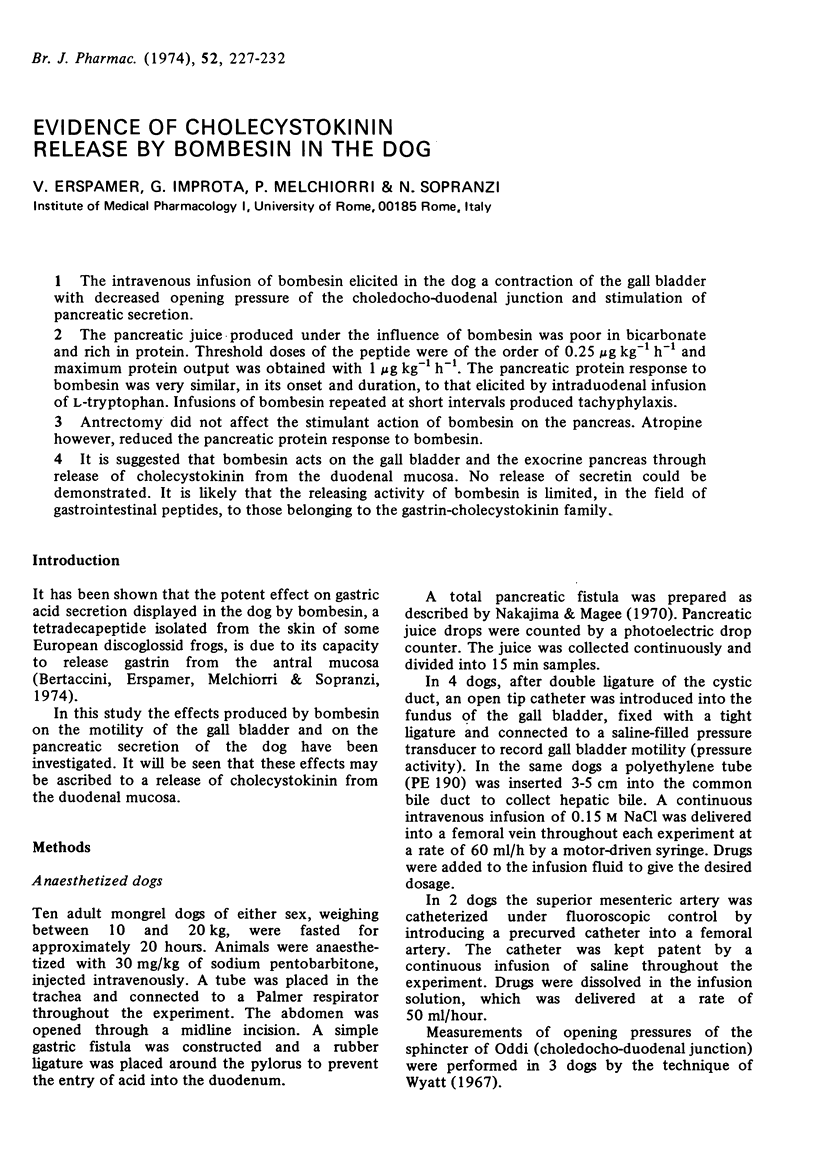

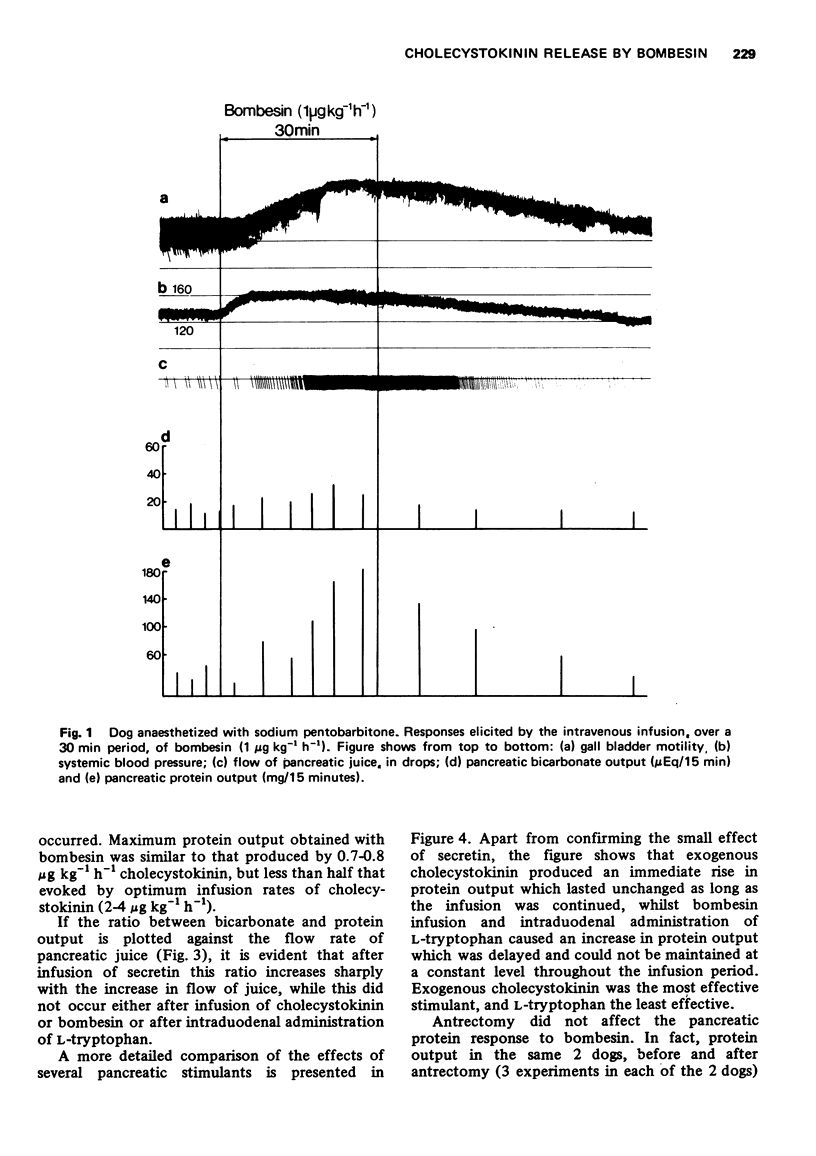
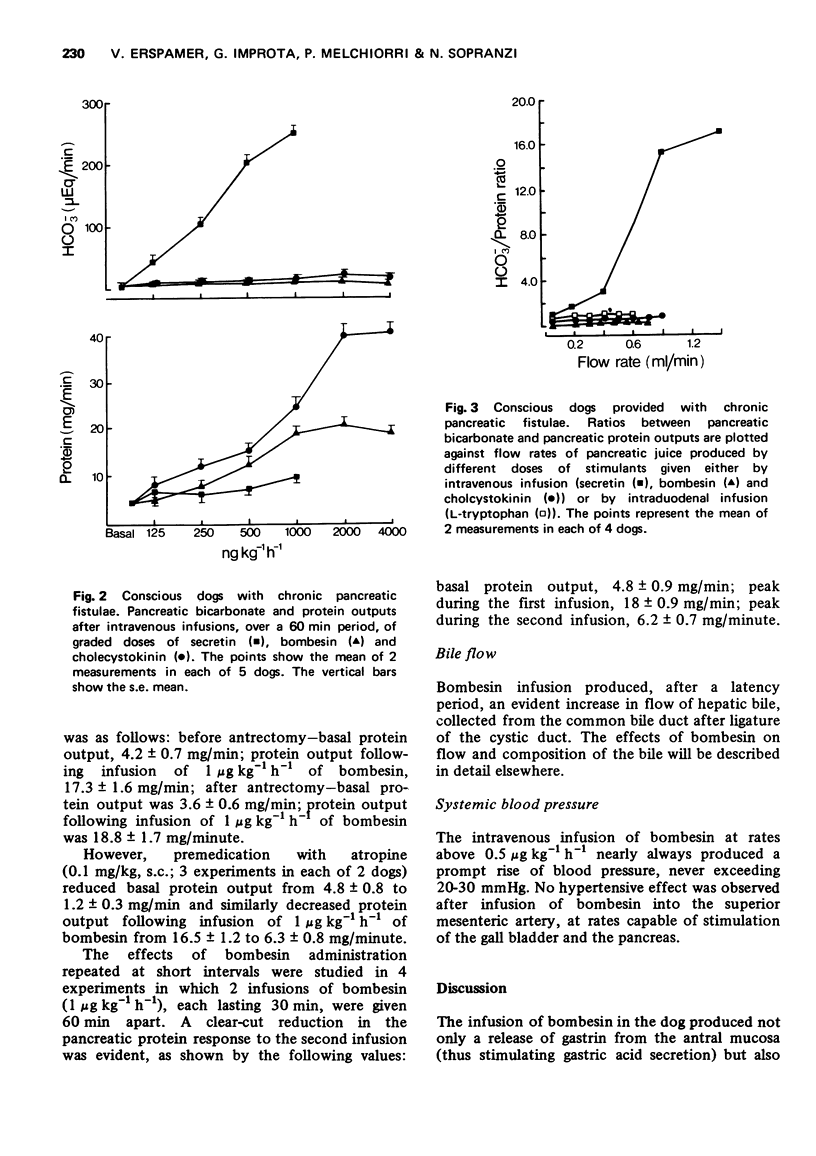
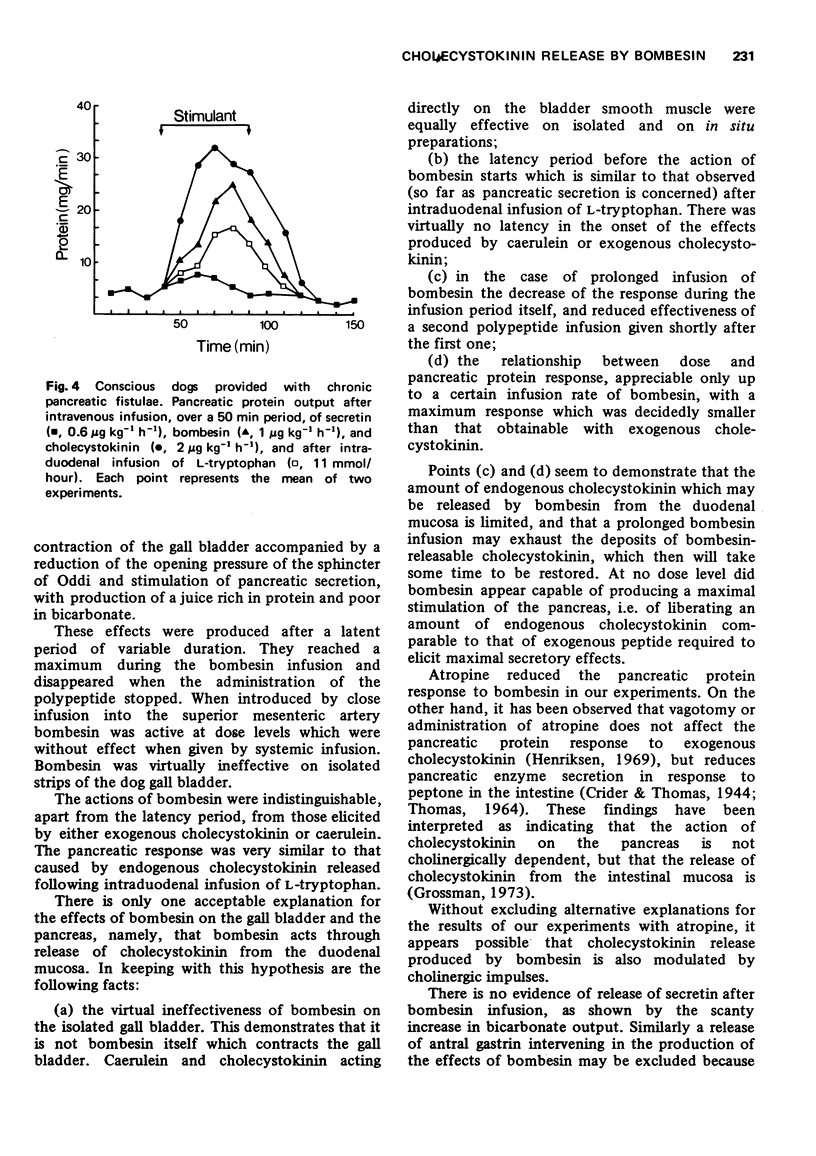
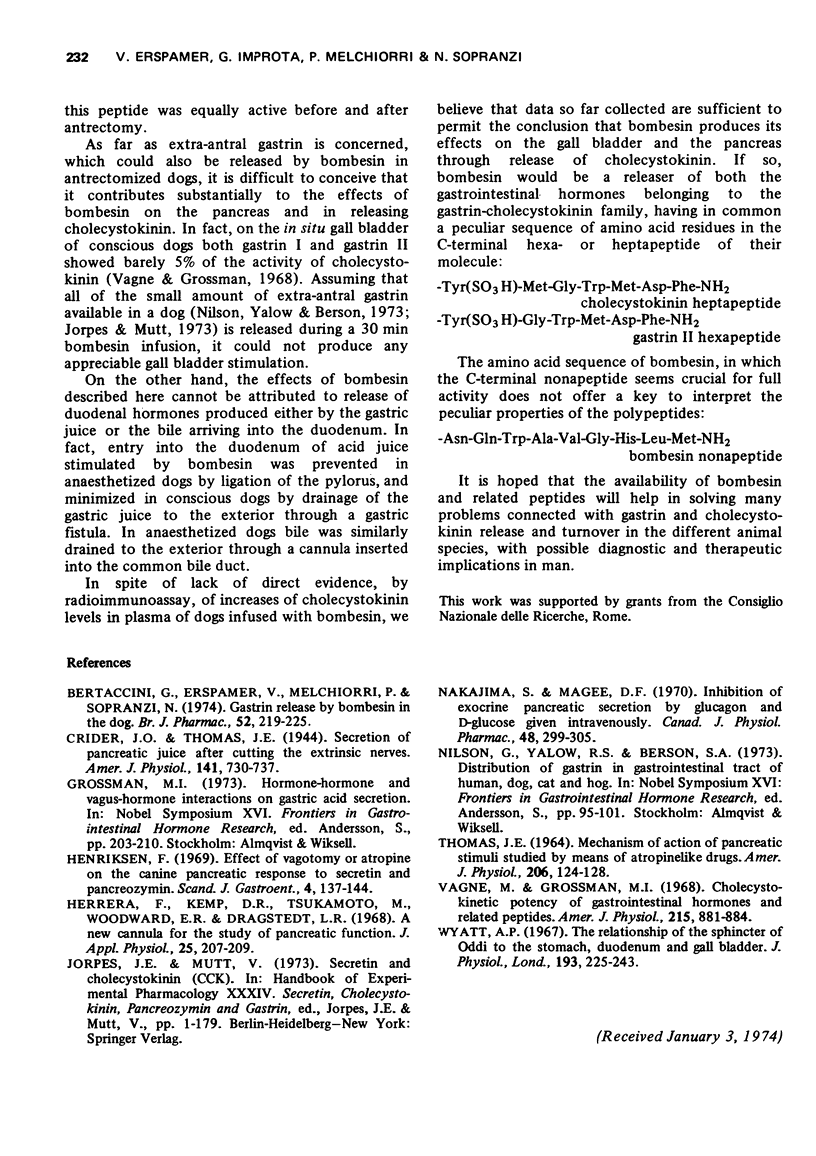
Selected References
These references are in PubMed. This may not be the complete list of references from this article.
- Bertaccini G., Erspamer V., Melchiorri P., Sopranzi N. Gastrin release by bombesin in the dog. Br J Pharmacol. 1974 Oct;52(2):219–225. doi: 10.1111/j.1476-5381.1974.tb09703.x. [DOI] [PMC free article] [PubMed] [Google Scholar]
- Henriksen F. W. Effe of vagotomy or atropine on the canine pancreatic response to secretin and pancreozymin. Scand J Gastroenterol. 1969;4(2):137–144. doi: 10.3109/00365526909179921. [DOI] [PubMed] [Google Scholar]
- Herrera F., Kemp D. R., Tsukamoto M., Woodward E. R., Dragstedt L. R. A new cannula for the study of pancreatic function. J Appl Physiol. 1968 Aug;25(2):207–209. doi: 10.1152/jappl.1968.25.2.207. [DOI] [PubMed] [Google Scholar]
- Nakajima S., Magee D. F. Inhibition of exocrine pancreatic secretion by glucagon and D-glucose given intravenously. Can J Physiol Pharmacol. 1970 May;48(5):299–305. doi: 10.1139/y70-049. [DOI] [PubMed] [Google Scholar]
- THOMAS J. E. MECHANISM OF ACTION OF PANCREATIC STIMULI STUDIED BY MEANS OF ATROPINELIKE DRUGS. Am J Physiol. 1964 Jan;206:124–128. doi: 10.1152/ajplegacy.1964.206.1.124. [DOI] [PubMed] [Google Scholar]
- Vagne M., Grossman M. I. Cholecystokinetic potency of gastrointestinal hormones and related peptides. Am J Physiol. 1968 Oct;215(4):881–884. doi: 10.1152/ajplegacy.1968.215.4.881. [DOI] [PubMed] [Google Scholar]


